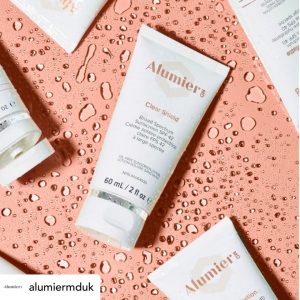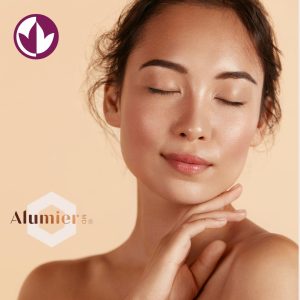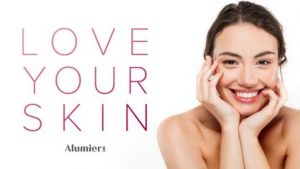
Skin Health & Hormones
by Hannah Hope
We are all aware of teenage spots, you remember when you were younger that one of the first things we encounter with our skin is acne, with its onset at puberty. It’s the most common of all skin disorders and describes everything from ‘open comedones’ (blackheads) to nodules, those tender spots deep in the skin. But what about hormonal spots that appear once you are past puberty and teenage hood?
Skin health and its appearance is due to many factors and acne can be caused by a number of interactions, from hormones to inflammation to genetics. Hence, why apart from teenage acne, it can explain why we can see these spots reappear during times of hormonal imbalance or when we are heading into perimenopause. Acne is linked to Androgens, which are steroid hormones such as testosterone. These hormones increase sebum (oil) production and stimulate acne lesions. This is why acne can be more predominant in males and women with PCOS, or menopausal women who can have higher levels of testosterone.
Why do I get spots around my period? You can notice that you might get some spots in the week leading up to your period or during it. This is due to those fluctuating hormones again, oestrogen and progesterone drop, sebum production is triggered, resulting in acne. You may also be experiencing PMS, causing stress, and stress can affect acne. Interestingly, if you look at traditional Chinese medicine, they look at your face as areas connected to different organs. Those spots you get on your chin. Yes, that’s the reproductive system! In between your eyebrows? Your liver. Both implicated with your hormones.
Diet can be a factor in Acne, with the western diet contributing to its prevalence. In non-westernised populations, such as the Kitvan Islands, acne is not present. Foods that cause high glucose and insulin responses can cause increased sebum production and stimulate the build-up of skin cells, called hyperkeratinisation. These foods can also stimulate androgen production, which in turn creates more sebum production. These types of foods are highly refined carbohydrates such as white bread, pasta, and cakes, processed foods and red meat. If you combine this food intake with a diet low in fibre, fruits and vegetables and omega 3’s, it can create a perfect terrain for acne. Diets high in refined carbohydrates and animal protein increases insulin levels, where, as I’ve mentioned, creates an increase in skin cell and sebum production.
So how can you help to reduce your chances of acne? Have lots of fibre in your diet, lots of plant protein, remove foods that cause inflammation such as processed carbohydrates and those high in saturated and trans fats, such as processed cakes and red meat and make time to exercise, as this helps to reduce IGF-1.
It should be clear now that as we begin to age, we may encounter acne once more. The
perimenopause is considered a second puberty, which is due to similar hormonal
encountered in both time periods. You may also start to notice lines in your skin, maybe itching, more scarring, bruising and a thinner appearance. This can be due to dropping oestrogen levels. Oestrogen has receptors all over the body and is involved in, among many other things, collagen production, hence these symptoms. Oestrogen also maintains skin moisture by increasing hyaluronic acid in the skin, as well as helping with wound healing.
Apart from HRT, you can help support your skin with hydration and eating foods rich in
phytoestrogens such as soybeans, flaxseed, nuts and seeds, broccoli, and berries. Massage can help with collagen production along with protein rich foods and foods high in vitamin C, like kale and peppers. Liver support is important too, to help with hormonal and toxin clearance, apart from
supporting your liver through diet, lymphatic massage and sauna use is helpful. Resveratrol, found in red grapes, blueberries, and raspberries, has anti-aging properties, due to it being anti-inflammatory and antioxidant.
Environmental factors can also affect skin health, so making sure that you have good skin care, free from parabens and SLS’s, that you exercise, don’t smoke, limit alcohol, and also reduce toxins in your life from things like plastics and household cleaners will help. Oh, and drink the water, always the water!
I found when my skin was looking dull, lined and generally awful over lockdown that there was some help! I emailed the team at Eve and Adam and they gave me a whole regime to follow including the Alumier brand and Environ. I can honestly say my skin has never looked better. I get lots of comments on how ‘dewy’ it looks, which isn’t bad at 46! Its hydrated, less pigmented, and smoother. They also contain no nasty parabens, which is really important as I mentioned. I also had an Alumier Chemical peel, which isn’t like it sounds, no Samantha from Sex and the City for me, just helping to start my journey for younger looking skin. Along with diet, a good skincare regime is of upmost importance.
Hannah Hope
Hannah Hope Nutrition, Bant registered nutritionist specialising in Women’s health and hormones



